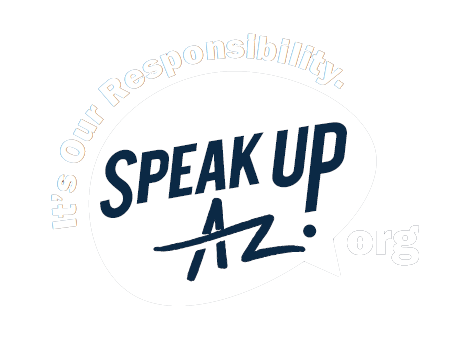Main menu
- About DES
- Services
- Basic Needs
- Adult Protective Services
- Food Assistance
- Nutrition Assistance
- How to Apply for Nutrition Assistance
- Frequently Asked Questions
- Change Report for Nutrition, Cash, and Medical Assistance Benefits
- Electronic Benefits Transfer (EBT) Card
- Health-e-Arizona Plus Application
- Publications for Nutrition, Cash, and Medical Assistance Benefits
- Work Requirements for Able-Bodied Adults Without Dependents
- Double Up Food Bucks
- Student Eligibility for SNAP
- How to Support Health in your Home
- Hunger Relief Programs
- Other Food Programs
- Information for DES Partners
- Other Resources
- Appeals
- Contact DES
- Customer Bill of Rights
- Limited English Proficiency
- Office of Program Evaluation
- USDA Programs Nondiscrimination Statements
- Nutrition Assistance
- Medical Assistance
- Refugee Resettlement
- Shelter and Housing
- Domestic Violence Support
- Sexual Violence Support
- Child and Family
- Disabilities
- Older Adults
- Employment
- Job Seekers
- Reentry Services
- Employer Resources
- Apprenticeship
- Unemployment - Individual
- Apply for UI Benefits
- File Your Weekly UI Claims
- ID.me Identity Verification
- Overpayments
- Reemployment Services and Eligibility Assessment (RESEA)
- Disaster Unemployment Assistance
- Pandemic Unemployment Assistance
- ARIZONA@WORK Employment Resources
- Income Tax Information
- Eligibility for Unemployment Benefits
- Work Search and Your Eligibility for Unemployment Benefits
- How Do I and Frequently Asked Questions
- Forms & Pamphlets
- Contact Arizona UI
- UI Benefit Fraud
- How To File An Appeal For UI Benefits
- UI Data Dashboard
- Working with a Disability
- Employment Service/Related Law Complaint
- Unemployment - Employer
- Applying for an Unemployment Insurance Tax Account Number
- Report Changes to Your Business
- Reporting Wages and Paying Unemployment Insurance Taxes
- Employment Taxes - Calculating Unemployment Taxes
- Unemployment Insurance Tax Forms
- Unemployment Insurance Tax Frequently Asked Questions
- Request UI Records
- Employer Handbook/ Unemployment Tax
- Employer Handbook/ Unemployment Benefit Claims
- AZ Unemployment Insurance Tax Survey
- Contact the Unemployment Tax Office
- Arizona Shared Work Program
- Senior Community Service Employment Program
- Veterans
- Workforce Innovation and Opportunity Act (WIOA)
- Arizona State Monitor Advocate
- Basic Needs
- How do I?
- Do Business with DES?
- Request a Vendor Meeting
- Frequently Asked Questions
- Learn about HIPAA?
- Request Assistance?
- Request DES Records?
- Submit Website Feedback?
- Work for DES?
- ADA Disability Rights/Reasonable Accommodations
- Volunteer?
- File a Discrimination Complaint
- Report Developmental Disabilities Fraud, Waste and Abuse
- Documents Center
- Media Center
- Office Locator
- Report Fraud
Low Income Home Energy Assistance Program

The Low Income Home Energy Assistance Program (LIHEAP) is a federally funded program that helps low income households pay their heating/cooling bills, minimize crises, and make energy costs more affordable. The LIHEAP program is administered in accordance with federal regulations, the Arizona LIHEAP State Plan, and LIHEAP Policy.
Eligibility
To qualify for LIHEAP, the applicant must require assistance with payments for energy-related utilities, and have an income that falls within the program guidelines. More information on the benefits applicants may qualify for can be found in the “Benefits” section below.
LIHEAP provides both regular and crisis benefits. Crisis benefits are a separate benefit that a household may receive if their regular LIHEAP benefit has been exhausted, and the household has received an energy utility shut-off or delinquency notice or equivalent (eviction notice, if utilities are included in rent; less than seven (7) days of energy remaining for portable or pre-paid energy).
The availability of LIHEAP assistance is not guaranteed and is available on a first-come, first-served basis. LIHEAP eligibility is limited to once in a 12-month period for a Regular LIHEAP benefit and once in a 12-month period for a Crisis LIHEAP benefit.
| Household Size | Monthly Gross Income Limit |
|---|---|
| 1 | $2,646 |
| 2 | $3,460 |
| 3 | $4,274 |
| 4 | $5,089 |
| 5 | $5,903 |
| 6 | $6,717 |
| 7 | $6,870 |
| 8 | $7,022 |
| 9 | $7,262 |
| 10 | $7,935 |
| 11 | $8,607 |
| 12 | $9,280 |
| 13 | $9,952 |
| 14 | $10,625 |
| 15 | $11,297 |
| Each additional over 15 | $672 |
Benefits
The amount of LIHEAP benefit that an eligible household receives is determined based on a household’s (1) income, (2) energy burden, and (3) household demographics. Based on these criteria, points are allocated to the household; the more points a household receives, the household will qualify for a higher Regular LIHEAP benefit. This system prioritizes households with a higher need (such as households with lower incomes or higher utility costs) and households with vulnerable household members (such as individuals with disabilities or individuals 60 years or older).
Points are evaluated based on the following:
-
Income Eligibility:
Total Monthly Gross Income Divided by the Monthly Gross Income Limit for the Household Size = % Income
Example: A household of three has a gross monthly income of $2,000, and the maximum income to qualify for a household of three is $4,674. Their income equals 46% of the maximum, which has three points applied.
2,000/4,274 = 0.46 x 100 = 46%
Percent of Poverty Points Applied 0% to 20% 5 points 21% to 40% 4 points 41% to 60% 3 points 61% to 80% 2 points 81% to 100% 1 point -
Energy Burden:
Monthly Utility Cost Divided by Monthly Gross Income = % of Energy Burden
Example: A household with a gross monthly income of $2,000 has an electric bill of $350. The energy burden percentage is 17.5%, which has three points applied.
350/2,000 = 0.175 x 100 = 17.5%
Energy Burden Percentage Points Applied 5% or less 0 points 6% to 10% 1 point 11% to 15% 2 points 16% to 20% 3 points 21% to 25% 4 points 26% to 30% 5 points 31% or over 6 points 2 points are added for households who utilize deliverable/portal fuel
-
Energy Need:
Energy Need Points Applied Elderly 1 point Disabled 1 point Child age 6 or younger 1 point Veteran 1 point NOTE: Only one Point per Category is Allowed
A household may receive up to the following benefit based upon their household’s evaluated points:
Points Benefit 1 to 4 $160 5 to 8 $320 9 to 12 $480 13 or over $640 Crisis assistance is also available for applicants who have exhausted their full Regular LIHEAP benefit. Crisis assistance may be awarded once per twelve-month eligibility period, based upon need, up to a maximum of $500.
NOTE: LIHEAP benefit amounts and points are subject to change annually based upon federal funding. The information contained on this page is effective October 12, 2024.
Contact Us
Contact the Low Income Home Energy Assistance Program hotline at 1-866 494-1981. The call center is available 8:00 a.m. to 5:00 p.m., Monday through Friday.
How to Apply
Applicants can apply for Energy Utility assistance safely from their own homes using the LIHEAP online portal. Applicants unable to apply online may apply by phone through the LIHEAP hotline at 1-866 494-1981 or by using a paper application (see “FAQs for LIHEAP Applicants” section for links).
Applicants interested in utility assistance will need to provide a copy of their current utility bill, photo ID, disconnection notice (if any), proof of income. Failure to provide the required documentation may delay eligibility determination.
Arizona State Resources
Pursuant to Title VI of the Civil Rights Act of 1964, the Americans with Disabilities Act (ADA) and other nondiscrimination laws and authorities, ADES does not discriminate on the basis of race, color, national origin, sex, age, or disability. Persons that require a reasonable modification based on language or disability should submit a request as early as possible to ensure the State has an opportunity to address the modification. The process for requesting a reasonable modification can be found at Equal Opportunity and Reasonable Modification

